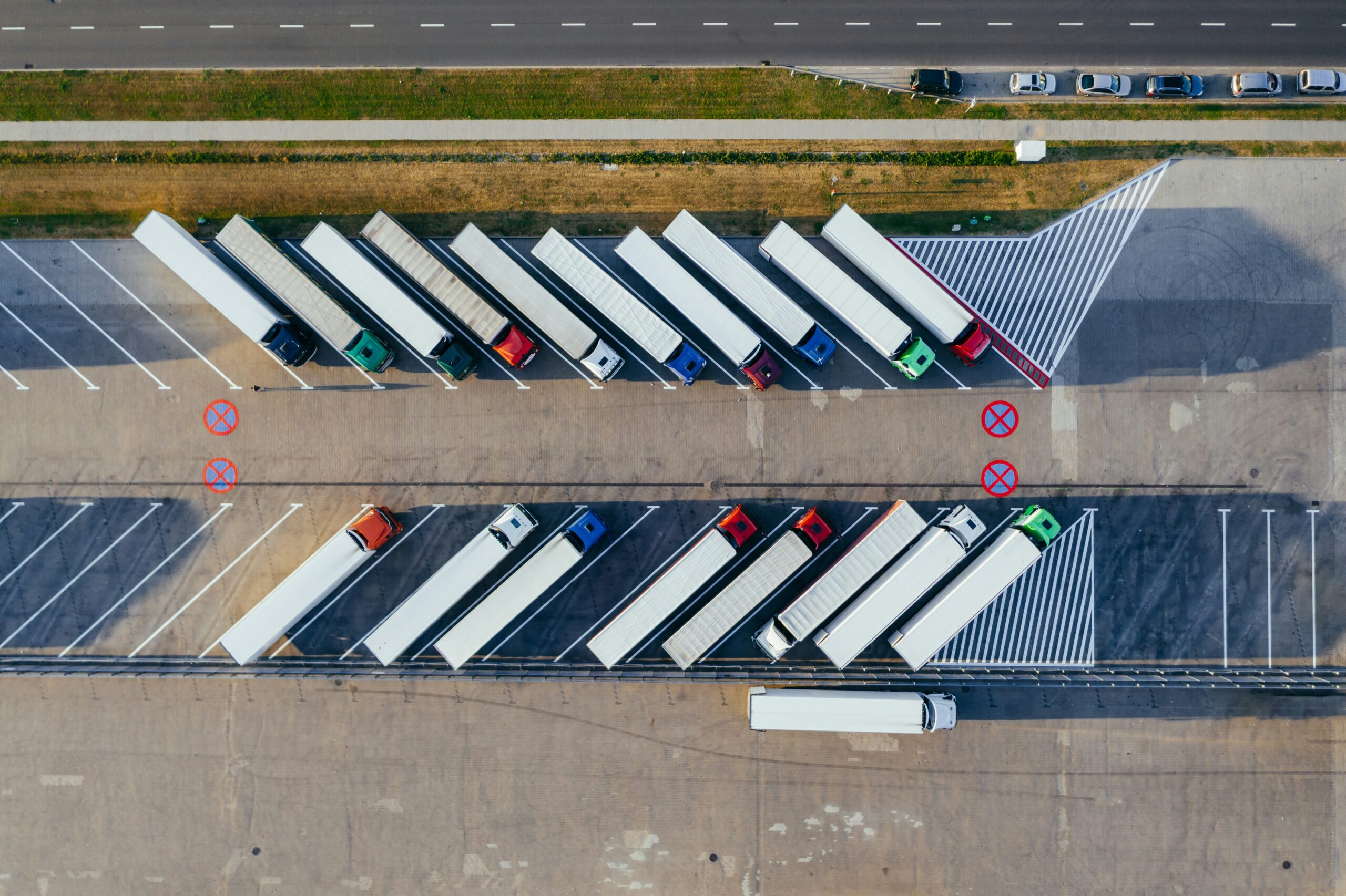A trailer is more than just a box on wheels; it’s an extension of your vehicle and a critical piece of equipment for work, recreation, and transport. You might haul a boat to the lake. You might haul equipment to a job site. You might haul inventory for your business. The performance of your vehicle affects your safety and the safety of others on the road. Neglecting trailer maintenance isn’t just a risk; it’s a gamble with potentially devastating consequences. The vast majority of roadside failures are preventable, stemming from small, overlooked issues that cascade into major problems. Crashes involving large trucks and trailers underscore the stakes; in 2023, over 5,100 people were killed in such incidents. This guide establishes a simple yet powerful routine: a monthly safety patrol. By dedicating just a small amount of time each month to a thorough inspection, you can take proactive control, prevent costly breakdowns, and ensure every journey is a safe one.
Introduction: Your Monthly Patrol for Peak Trailer Safety
Why Monthly Checks Are Your Best Investment
Regular maintenance is the single most effective way to extend the life of your trailer and protect your investment. A monthly inspection schedule moves you from a reactive stance—fixing things when they break—to a proactive one. This consistency allows you to spot wear and tear before it leads to catastrophic failure. A worn bearing, a frayed wire, or a low tyre might seem minor, but on the highway, they can lead to loss of control, accidents, and expensive, trip-ruining repairs. Committing to a monthly check is an investment in reliability, safety, and ultimate peace of mind. It’s the difference between towing with confidence and hoping for the best.
Pre-Inspection Prep: Setting the Stage for Success
Before you begin your monthly inspection, proper preparation ensures an efficient and safe process. Taking a few moments to set up correctly allows you to focus entirely on the task at hand.
Gather Your Tools and Resources
You don’t need a full mechanic’s workshop, but having a few key items will make your inspection much more effective. Your basic toolkit should include:
- Tire Pressure Gauge: Essential for accurate inflation checks.
- Wrench or Lug Wrench: To check the tightness of wheel lug nuts.
- Flashlight: For inspecting dark areas like the undercarriage and inside frame rails.
- Gloves and Rags: To keep your hands clean and wipe away grease or dirt.
- Wheel Chocks: A critical safety item to prevent the trailer from rolling.
- Owner’s Manual: Keep it handy for specifications on tyre pressure and other details.
Choose a Safe and Level Location
The ideal location for your inspection is a flat, level, and firm surface, like a concrete driveway or a paved lot. Avoid soft ground or slopes, which can be unstable and dangerous. Make sure you have enough light from the sun or artificial sources. Also, have enough space to walk all around the trailer. You should be able to lie down to check under the trailer. Chock the trailer wheels securely before you begin any work.
The Monthly Patrol: Your Comprehensive Trailer Safety Checklist
This checklist is the core of your monthly routine. Work through each system methodically to ensure nothing is missed.
Tires & Wheels: Your Connection to the Road
Your trailer’s tyres are its only contact with the ground, making their condition paramount. Tire-related issues are a leading cause of roadside breakdowns and accidents. In the 2024 Commercial Vehicle Safety Alliance (CVSA) International Roadcheck, tyre problems caused 20.8% of all out-of-service violations. Furthermore, tyre failures are responsible for an estimated 11,000 crashes and 200 deaths each year in the U.S..
- Tire Pressure: Use your gauge to check the pressure in every tyre, including the spare. Inflate them to the PSI specified on the tyre’s sidewall or the trailer’s data plate. Check the pressure when the tyres are cold for an accurate reading.
- Tread Depth and Wear: Visually inspect the tread. Look for signs of uneven wear, which could indicate an axle or suspension problem. Check for bald spots, cuts, cracks, or bulges in the sidewalls.
- Lug Nuts: Ensure all lug nuts are present and tight. Use a wrench to confirm they are securely fastened. A loose wheel can detach from the trailer, causing a severe accident.
- Wheels and Rims: Inspect the wheels for cracks, significant dents, or heavy rust that could compromise their integrity.
- Axles and Bearings: While a full bearing service is an annual task, a monthly visual inspection is crucial. Look for grease leaking from the hub caps, which signals a failing seal. Listen for any grinding or squealing noises when you move the trailer, as this can indicate a worn wheel bearing.
Brake System: Your Stopping Power
Your trailer’s brakes are a safety-critical system. Proper function is essential to keep control of your vehicle and trailer during stops. This is especially important in emergencies. Brake system violations are one of the top reasons trailers are put out of service during roadside checks. According to the Commercial Vehicle Safety Alliance, over 15% of trailers inspected are sidelined due to issues with brakes, lights, or tyres.
- Brake Connection: Ensure the brake controller wiring connection to your tow vehicle is clean and secure.
- Actuation Test: With the trailer connected, have a helper activate the brakes from the tow vehicle. Confirm that the trailer brakes engage. For electric brakes, you should hear a faint hum or click from the wheels. For hydraulic surge brakes, check the brake fluid reservoir on the coupler and inspect lines for leaks.
- Breakaway System: If equipped, test the breakaway system. Pull the pin and try to pull the trailer forward slightly. The trailer brakes should lock up. Reinsert the pin immediately after the test. Ensure the breakaway battery is charged.
- Visual Inspection: Look at the visible components of the brake system. Check for any loose or damaged wires, leaking hydraulic lines, or excessive corrosion.
Lighting & Electrical System: Be Seen, Be Safe
Properly working lights are needed to show other drivers what you plan to do. A simple burnt-out bulb or a corroded wire can create a dangerous situation on the road.
- Connect to Vehicle: Hook up the trailer’s wiring harness to your tow vehicle.
- Test All Lights: Have a helper stand behind the trailer while you test every function from the driver’s seat:
- Brake Lights: Ensure they illuminate brightly when you press the brake pedal.
- Turn Signals: Check both left and right signals.
- Running Lights/Taillights: Turn on your vehicle’s headlights to activate these.
- Hazard Lights: Confirm all signal lights flash simultaneously.
- Wiring Inspection: Trace the wiring harness from the plug back along the trailer frame. Look for any frayed, cracked, or pinched wires. Ensure all connections are secure and free of significant corrosion. Secure any loose wiring that could be damaged by road debris.
Hitch & Coupler System: Your Secure Connection
The hitch and coupler form the physical bond between your tow vehicle and trailer. The failure of this connection can be catastrophic.
- Coupler Mechanism: Inspect the coupler for any cracks or deformation. Work the latching mechanism to ensure it moves freely and locks securely onto the hitch ball. Apply a light layer of grease to the inside of the coupler.
- Hitch Ball: Check the hitch ball on your vehicle for wear, pitting, or rust. Ensure it is tightened to the correct torque specification.
- Safety Chains: The safety chains are your last line of defence. Inspect every link for wear, cracks, or deformation. Ensure the hooks are in good condition and the latches work properly. When connected, the chains should be crossed under the coupler and have enough slack for turns but not so much that they drag on the ground.
Frame & Suspension: The Backbone of Your Trailer
The trailer’s frame and suspension system bear the entire load. A structural failure can happen suddenly and without warning if signs of stress are ignored.
- Frame Inspection: Visually inspect the entire frame, including cross-members and the tongue. Look for cracks, especially around welds and joints. Check for significant rust that could weaken the structure, as well as any bending or twisting.
- Suspension Components: Examine the leaf springs for any cracked or broken leaves. Check shackles and bolts for excessive wear or looseness. For torsion axles, inspect for any signs of sagging or damage to the axle housing.
- Fenders and Body: Check that fenders are securely attached and not at risk of contacting the tyres. Inspect the trailer bed or body for any damage that could compromise its integrity.
Other Essential Components & Special Considerations
Beyond the main systems, a few other checks are vital. This includes ensuring your cargo is properly secured, a common violation. In the CVSA’s 2024 International Roadcheck, cargo securement problems were among the top five violations. They caused 9.6% of out-of-service orders.
- Jacks and Landing Gear: Ensure the jack operates smoothly and is properly lubricated.
- Safety Equipment: Check that any required safety equipment, like fire extinguishers or reflective triangles, is present and functional.
Addressing Monthly Findings: When to Act and When to Call a Pro
Your monthly inspection will find issues. Knowing how to respond is just as important as finding them.
Identifying and Prioritising Faults
Categorise any problems you find. Critical safety issues like faulty brakes, a cracked frame, or a non-functioning coupler require immediate attention and mean the trailer should not be used. Minor issues, like a burnt-out running light or low tyre pressure, are simple but should still be addressed before your next trip.
Quick Fixes You Can Handle
Many common issues are easy to fix yourself with basic tools:
- Inflating Tires: A simple task with an air compressor.
- Replacing Bulbs: Most trailer light bulbs are easily accessible and simple to replace.
- Cleaning Connections: Use a wire brush to remove corrosion from electrical plugs and battery terminals.
- Tightening Lug Nuts: A straightforward but critical task.
When to Seek Professional Repair Help
Do not hesitate to seek professional help for complex or critical repairs. This includes:
- Brake System Service: Repairing or replacing brake pads, shoes, or hydraulic components.
- Welding and Frame Repair: Any cracks or significant damage to the frame requires a certified welder.
- Axle and Bearing Service: Repacking or replacing wheel bearings is a job best left to those with the proper tools and experience.
- Complex Electrical Faults: If you can’t solve a lighting issue by changing a bulb or cleaning a connector, a professional can trace the fault.
Beyond the Monthly Check: A Holistic Maintenance Schedule
Integrating Monthly Inspections into Your Broader Maintenance Plan
Your monthly check is the foundation of a comprehensive maintenance strategy. It should be supplemented by more intensive semi-annual and annual tasks. For example, a full wheel bearing service (cleaning, inspection, and repacking with fresh grease) should typically be done once a year or every 12,000 miles. A full brake system inspection and adjustment should also be on your annual to-do list.
The Value of Professional Inspections
Even with diligent monthly checks, having a professional mechanic perform a comprehensive annual inspection is a wise investment. They have the tools and expertise to spot issues you might miss, such as internal axle wear, subtle frame stress, or complex electrical problems. This provides an extra layer of assurance that your trailer is truly roadworthy.
Your Responsibility as a Trailer Owner: Commitment to Safety
Upholding Operator & Driver Obligations
Owning and operating a trailer means you have a big responsibility. You are legally and ethically obligated to ensure your equipment is safe for the road. This checklist is more than a suggestion; it’s a framework for fulfilling that duty. A well-maintained trailer protects your cargo, your vehicle, and, most importantly, the lives of those you share the road with.
The Peace of Mind of a Well-Maintained Trailer
There is immense value in the confidence that comes from knowing your equipment is in top condition. Regular maintenance gives you peace of mind. This lets you focus on the road ahead instead of worrying about problems behind you. This peace of mind is the best return on your investment.
Conclusion: Drive Safe, Tow Confidently
A Summary of Your Monthly Safety Commitment
Consistent, proactive maintenance is the cornerstone of safe trailering. By adopting this monthly checklist, you transform trailer ownership from a game of chance into a managed and predictable system. You empower yourself to identify and address problems on your own terms, in your driveway, rather than on the side of a busy highway. Inspecting your tyres, brakes, lights, hitch, and frame isn’t just a chore—it’s a commitment to safety, reliability, and responsibility.
Prefer a pro to handle your monthly patrol? Book a thorough Trailer Safety Inspection with Wales Heavy Vehicle Repairs. Our heavy-vehicle technicians check tyres and wheels, brakes and breakaway systems, lighting and wiring, couplers and safety chains, axles, bearings and suspension—and fix defects where possible. You’ll get a clear written report, defect-clearance support, and fleet-friendly scheduling to keep your trailers roadworthy, compliant, and earning. Contact Wales Heavy Vehicle Repairs today to schedule an inspection or set up a fleet maintenance plan.



